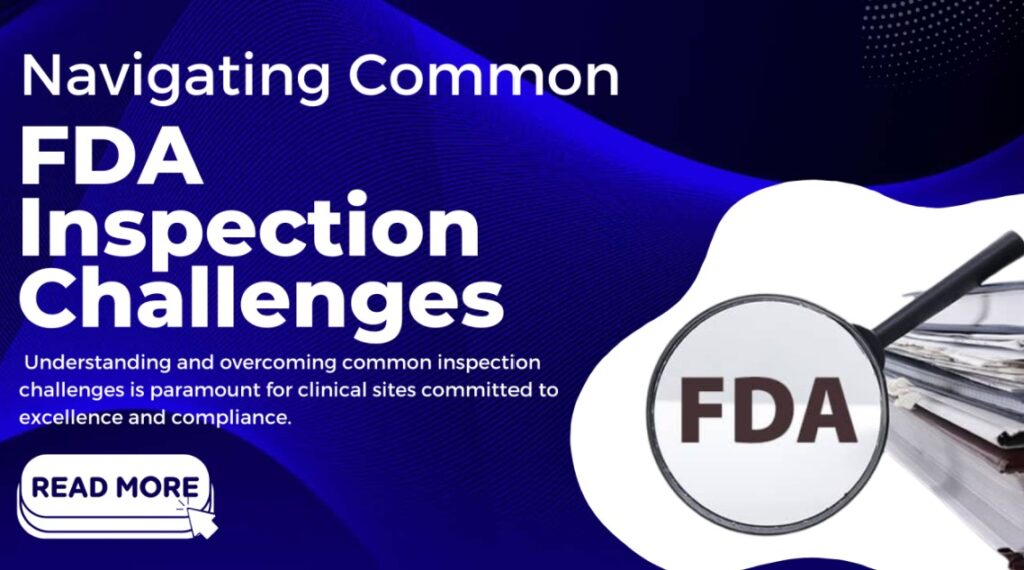
FDA inspections, while critical for ensuring the safety and efficacy of clinical research, can be a significant source of stress for clinical site staff. The anticipation and the process itself can create anxiety, but with the right strategies, your team can navigate these challenges successfully and even use the experience as an opportunity for professional growth and improvement. Here are some effective ways to help clinical site staff cope with the pressures of FDA inspections and turn stressful situations into success stories.
Preparation is the Best Defense
Thorough preparation is the most effective way to reduce stress during FDA inspections. Ensuring that all staff are well-trained and understand their roles and responsibilities is crucial. This includes regular reviews of GCP guidelines, internal SOPs, and any recent updates to FDA regulations. Conduct mock inspections to familiarize staff with the inspection process. This not only helps identify any gaps in compliance but also boosts confidence across the team.
Maintain Open Lines of Communication
Create an environment where staff feel comfortable communicating their concerns and questions. Prior to an inspection, hold briefings to go over what to expect and encourage team members to share their experiences and strategies for handling potential stress points. During the inspection, maintain open lines of communication to manage any unexpected issues swiftly and efficiently.
Support System and Teamwork
Encourage a strong support network within your team. Stress can be significantly alleviated when staff feel they are part of a cohesive unit working towards a common goal. Foster a team-oriented atmosphere where everyone knows they have the support of their colleagues and superiors. This includes having clear, accessible points of contact for when they need guidance or reassurance during the inspection process.
Physical and Mental Preparedness
Remind staff of the importance of personal well-being during stressful times. Encourage regular breaks, proper hydration, and, if possible, provide a quiet space for relaxation during lengthy inspection days. Mental preparedness is just as important, and practices such as mindfulness or stress-reduction techniques can be beneficial.
Post-Inspection Debrief and Continuous Improvement
After the inspection, it’s important to gather the team for a debrief session. Discuss what went well and what could be improved for future inspections. This not only helps in identifying areas for development but also allows the team to collectively process the experience and relieve post-inspection stress. Implementing changes based on feedback demonstrates a commitment to continuous improvement and helps build confidence in handling future inspections.
Encouraging Professional Development
Invest in the professional development of your staff. Provide opportunities for further training and education in areas highlighted during inspections. This not only improves compliance and performance but also empowers staff by giving them the tools they need to succeed.
By turning the stress of FDA inspections into a constructive force, clinical site staff can improve their professional capabilities and enhance the overall quality of the research conducted. With the right preparation, support, and continuous improvement, your team can transform potential challenges into achievements, maintaining compliance and ensuring successful outcomes.
To further enhance your team’s ability to manage the stress of FDA inspections and to foster a proactive, knowledgeable workplace, consider enrolling in specialized courses such as “Preparing for FDA GCP Inspections – Best Practices for Clinical Sites.” This training can provide deeper insights and more structured approaches to not only surviving but thriving during FDA inspections. Enroll in the course and take a significant step towards empowering your clinical site staff.







